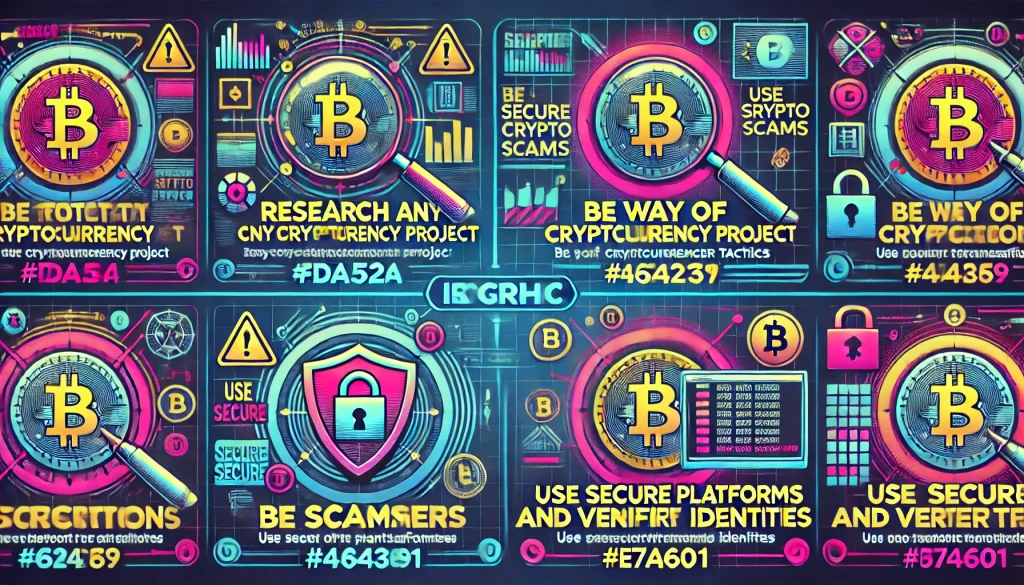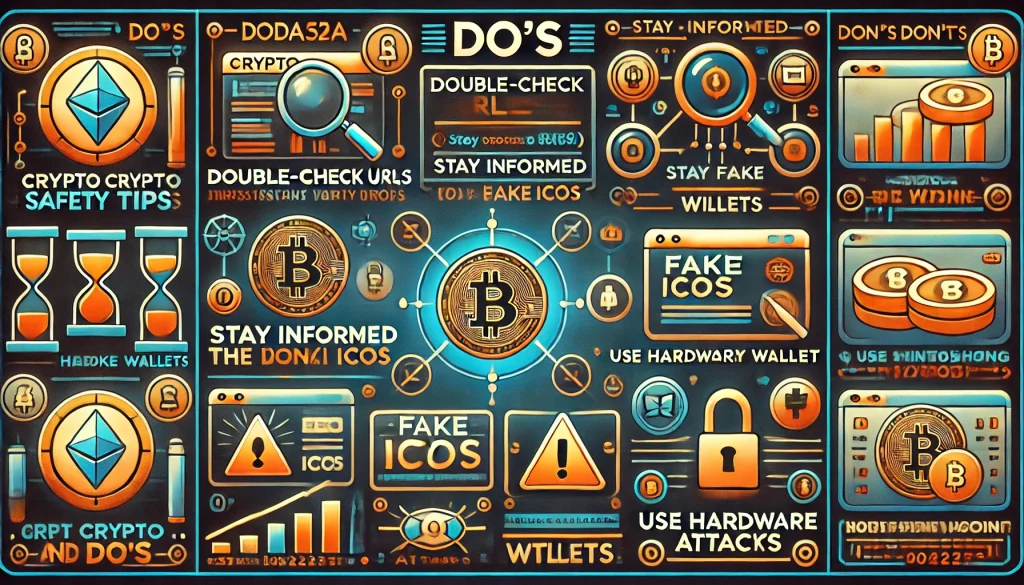The world of cryptocurrency offers tremendous opportunities, but it also harbors risks—one of the biggest being crypto scams. With the rise of digital assets, scammers have developed increasingly sophisticated tactics to target unsuspecting investors. In this guide, we’ll show you how to spot and avoid crypto scams. Whether you’re an experienced investor or a newcomer to the crypto world, understanding these tactics is critical to protecting your digital assets. Following these steps will give you the tools and knowledge you need to navigate this ever-changing space safely.
Materials or Tools Needed
Before you can effectively avoid crypto scams, you’ll need a few essential tools and resources to safeguard your investments.
| Material/Tool | Description |
|---|---|
| Secure Crypto Wallet | A safe and secure wallet for storing digital currencies like Bitcoin or Ethereum. |
| Reputable Exchange | Use exchanges like Binance or Kraken with solid reputations and security protocols. |
| Two-Factor Authentication | Enhance account security with an extra layer of verification. |
| Research Platforms | Websites like CoinMarketCap to verify the legitimacy of projects. |
| Online Transaction Tools | Etherscan or other tools to verify transactions and addresses. |
Step-by-Step Instructions:

Step 1: Research Any Cryptocurrency Project
The first step to protecting yourself from crypto scams is to research the project thoroughly. Look into the whitepaper, development team, and community feedback on platforms like CoinMarketCap and CoinGecko. Be cautious if the project has unclear goals, an anonymous team, or promises unusually high returns with no risk. Scammers often create fake projects with convincing marketing, so always do your homework.
Step 2: Be Wary of Scammer Tactics
Scammers often use psychological tactics to pressure you into quick decisions. Watch out for urgent investment opportunities with “guaranteed returns” or communications that ask for sensitive information like private keys. Fake giveaways or phishing emails might also be disguised as legitimate offers. Always double-check any claims before making any financial decisions.
Step 3: Secure Your Transactions
Before sending any funds, verify all transaction details. Always use secure and trusted wallets, and double-check wallet addresses when sending money. Use tools like Etherscan to confirm the validity of the transaction address, as sending funds to the wrong place is irreversible. Be skeptical of unsolicited messages asking for payment or providing investment advice.
Step 4: Use Secure Platforms and Verify Identities
When trading or investing in crypto, use reputable platforms like Binance or Kraken, which have robust security protocols. Avoid unregulated exchanges or websites. Always enable two-factor authentication for your accounts and verify the identity of anyone you deal with in the crypto space. Scammers frequently impersonate legitimate companies or individuals.
Tips and Warnings

Do’s
- Double-Check URLs: Scammers are becoming increasingly sophisticated in creating fake websites that closely mimic legitimate ones. Always take an extra moment to verify the URL before entering any sensitive information. Look for small differences, such as misspellings or unusual domain extensions, to avoid being tricked into a fraudulent site.
- Stay Informed: The cryptocurrency world is constantly evolving, and with it, so are the scams. Regularly reading updates from trusted sources can help you recognize the latest threats. By staying informed about new scams, you will be more equipped to detect suspicious activities before falling victim.
- Use Hardware Wallets: Hardware wallets provide an extra layer of protection by keeping your crypto assets offline. Unlike software wallets, which are vulnerable to online hacks, hardware wallets store your private keys offline, making it much harder for hackers to access your funds. They are widely considered one of the most secure methods of storing cryptocurrency.
Don’ts
- Ponzi Schemes: Cryptocurrency Ponzi schemes often promise huge returns if you bring in new investors. These scams are cleverly disguised as legitimate investment opportunities, but in reality, they rely on a pyramid-like structure to pay off older investors using funds from newer recruits. Avoid any scheme that requires recruitment or promises unrealistic profits.
- Fake ICOs: Initial Coin Offerings (ICOs) can be a legitimate way to invest in new crypto projects, but fake ICOs are increasingly common. These fraudulent platforms mimic genuine projects but are designed to steal your funds or personal information. Always research the ICO thoroughly and use well-known, reputable exchanges when investing.
- Phishing Attacks: Phishing scams frequently come in the form of emails or messages that appear to be from trusted cryptocurrency companies or platforms. These emails often ask you to click on a link or provide sensitive information, such as your wallet’s private key. To protect yourself, never click on unsolicited links or share your personal data through unverified emails..
Conclusion
Navigating the world of cryptocurrency can be exciting, but it comes with risks. By following the steps outlined here, you’ll be better equipped to recognize and avoid crypto scams. Stay vigilant, conduct thorough research, and always use secure platforms to protect your digital assets. The crypto world holds vast potential, but your security should always come first.
FAQ
What are the most common crypto scams?
The most common crypto scams include phishing attacks, Ponzi schemes, and fake investment opportunities. Scammers also create fake tokens or wallets to trick users into sharing private keys or transferring funds.
How can I tell if a crypto project is legitimate?
To ensure a project is legitimate, always research the development team, whitepaper, and community reviews. Use trusted platforms like CoinMarketCap and CoinGecko to verify information. Be cautious of any project that promises guaranteed high returns or lacks transparency.
What should I do if I’ve been scammed?
If you suspect you’ve fallen victim to a crypto scam, immediately report it to the exchange or wallet provider and file a complaint with cybersecurity authorities. Recovering lost funds may be difficult, but it’s essential to act quickly.
Resources
- TechTarget. Common Cryptocurrency Scams
- DataVisor. Cryptocurrency Scams
- YBS. How to Avoid Cryptocurrency Scams
- Kaspersky. 4 Key Steps to Protect Cryptocurrency
- Trust & Will. Cryptocurrency Asset Protection

